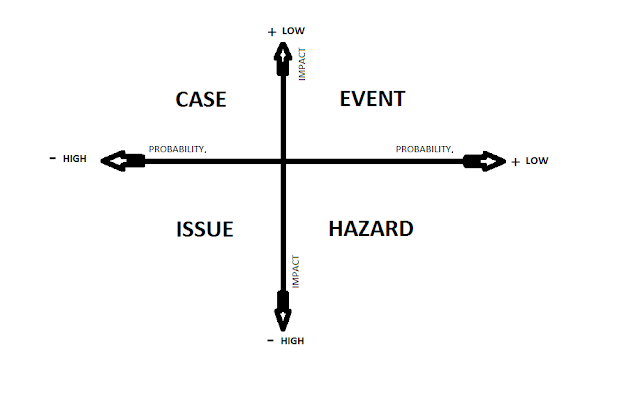Risk can be measured in various ways, but the two most important means of measuring risk is in terms of probability of occurrence or frequency and impact.
Risk can be categorized into four sections based on the two measurement parameters for risk.
1. EVENTS
2. CASES
3. HAZARDS
4. ISSUES
Below is a graphical representation showing how each category of risk is defined by the measurement parameter
Where there is a low probability, or a low frequency of occurrence of a risk factor and where the impact of the risk factor is also low when it occurs, then such a risk is categorized as an "Event". Events are normal risk factors that have low impact on plans, and in most cases generic contingency plans are used to cover for such risk factors.
A risk factor becomes a "Case" where there is a high probability of the risk occurring but the impact is low. Although the impact is low, the risk keeps occurring hence it becomes a case to be considered by decision makers.
High impact risk factors with a high level of occurrence, or with a probability value close to One (1) is termed an "Issue". This category of risk is every decision maker's problem as it can change the overall planning strategies.
"Hazards" are risks factors that are usually hidden to most decision makers due to its nature; low probability of occurrence; hence overlooked, but the impact is high when it occurs.
